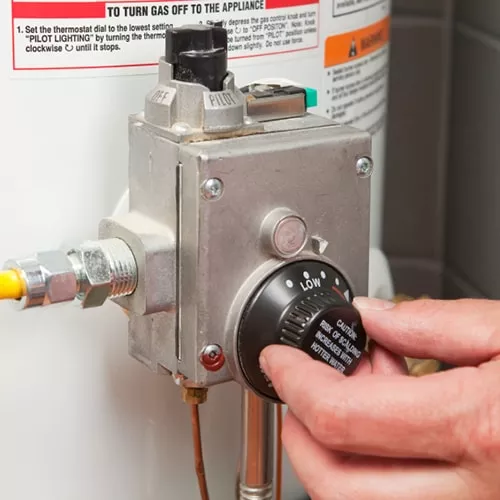
If you have a water heater in your home, there's a good chance it's a tank unit. This type of water heater has been around for years and is currently the most popular water heating choice on the market. They provide many advantages over alternatives (like on-demand water heaters).
One disadvantage is that to provide you with hot water, storage water heaters need to run continuously, even while you sleep. So before we get into the tutorial, I would like to recommend choosing an energy-efficient water heater. It will pay off in the long run and is an excellent way to help conserve resources. Whether you are installing an electric or gas unit, this guide will give you the knowledge you seek on how to replace a hot water heater. It should go without saying that you need to match the fuel type to whatever setup you have existing at your home. There are converters from propane to natural gas, and vice versa, that you can purchase separately, but most manufacturers today provide fuel-specific water heaters from the factory, keeping things simple always a great general rule of thumb.
How Often to Replace Water Heater?
It depends on the type. Expect your gas water heater to last somewhere around ten to twelve years, and an electric tank will need to be replaced every fifteen years or so. Tankless water heaters can last even longer!
Mythbusters Water Heater Explosion
Before we proceed, watch this awesome video from Mythbusters. Hilariously and impressively, it explains the dangers of water heater modifications, leading to unsafe temperatures that create too much pressure. This is why there are safety functions built into water heaters today, one of them being the pressure relief valve. Enjoy this cool segment before proceeding to read up on how to replace a hot water heater.
How to Remove a Water Heater
Before you start, if you're playing with gas, you don't want to end up playing with fire. It would be a good idea to keep a fire extinguisher nearby, just in case. Some of these steps apply to gas units, some apply to electric, but most will be general enough for both:
- Turn the gas valve to the off position. This valve would be the one close to the wall, usually with a small red handle, not the one on the front of the heater. If it is electric, turn off the circuit breaker for the room you are working in, and disconnect the power to the tank.
- Verify the gas line is not leaking. To do so, watch the pilot light burn out. If it stays on, it means the unit is still getting gas, and the valve is not closing the line. If this occurs, it would be a good idea to turn off your gas at the meter. You may have to re-light other pilots in the house but better to be safe than sorry.
- Turn the pilot to the off position.
- Disconnect the exhaust ducts from the tank (for gas-fueled only). This may require the use of a 1/4 or 5/16 inch socket to disconnect the first element of the vent from the top of the heater.
- Shut off the water valve at the inlet, usually found above the tank.
- Release the water by connecting a hose to the valve at the bottom (it looks like your hose bib outside) and opening it just like turning on an exterior hose. Run the hose line to a drain or out the window, being careful to secure it a place to keep from getting scalded. A gallon of water weighs around 8 lbs, so if you want to move a 50 lb tank with water in it, you better be at the top of your CrossFit game. Much easier to drain it first!
- While you wait for the water to drain, disconnect the tank from the gas line. In between your gas valve and your water heater is a flexible gas line called a gas flex. This line does not generally need to be replaced, so use a pipe wrench to disconnect it from the gas valve on the water heater's front. Use a second wrench with the other hand to prevent the counter-torque from wreaking havoc on your gas line.
- Disconnect the water lines (both in and out) and watch the magic as gravity takes over and the tank evacuates the water at a much more rapid pace.

Once the water has completely drained out, you should be all set to remove the tank.
Installing an Electric Hot Water Heater
To continue this tutorial, read how to install an electric water heater here.
Installing a Gas Unit
To continue this tutorial, read how to install a gas water heater here.
Learn from the Experts at PlumbersStock
Well, that's it! You should be good to go. Hopefully, this has helped teach you how to replace a hot water heater. Remember, we have great deals on water heater parts, as well as accessories.
Related Resources:
Fixing a Water Heater Pilot Light
Tankless vs. Tank Water Heater Comparison
How to Install a Gas Water Heater
How to Install an Electric Water Heater
How to Solder Water Heater Pipes
How to Wire a Hot Water Heater
How to Install a Water Heater Expansion Tank



